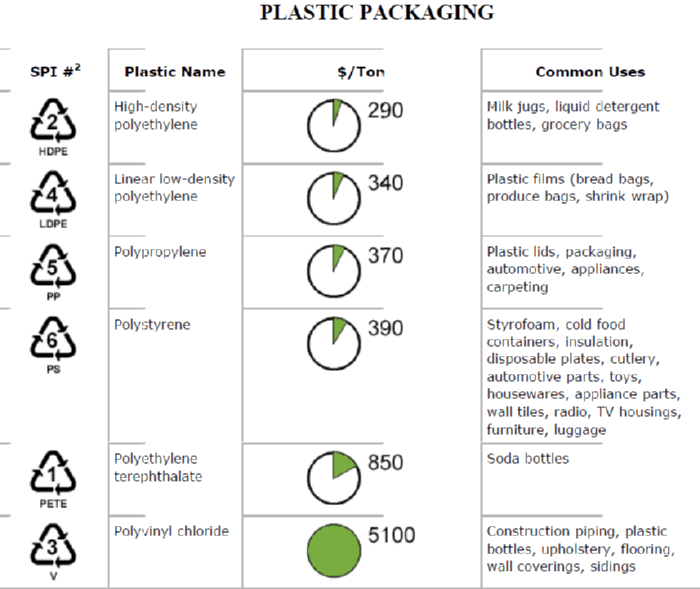
The environmental impact cost of manufacturing each plastic is measured in $/ton. HDPE, LDPE, PP, and PS have roughly the same environmental impact rating. PETE is about twice as high as these four. PVC is nearly six times higher than PETE primarily because of carcinogenic emissions. Only 1.8% of packaging plastic is recycled.
Source: ashlandfood.coop
Anyone who has ever struggled with opening a new CD, or cut themselves on the sharp plastic of those pesky clamshell containers, has felt the annoyance caused by packaging. Our irritation is sparked as we wrestle those darned twisty-ties, or break a nail trying to remove the stubborn wrapping on the cap of our favorite condiment. Some of us may wonder if all that plastic obstruction is necessary, or what happens to the remains of the offending wrapper. When you trash the plastic wrap and Styrofoam and Ziploc bags, where do they go? For that matter, what happens to all the other plastic disposables – from cutlery to water bottles – that have arisen to accommodate the throwaway, consumer lifestyle?
In an ecological sense, they go nowhere. Although transported from place to place, plastic packaging and other non-biodegradable disposables are the most persistent and infrequently recycled forms of waste. Every piece of plastic that has ever been produced is still in existence, with much of it collecting in our landfills and environment. Roughly one third of municipal waste in the U.S. is comprised of discarded packaging. Most everything we buy these days is sold to us in some form of packaging, used to protect the enclosed product and advertise its value. These products may be customary and convenient, but they have serious consequences that affect our ecosystems and our health. An examination of the chemical components of commonly used plastics, as well as their manufacture and disposal, paints an unsustainable picture.
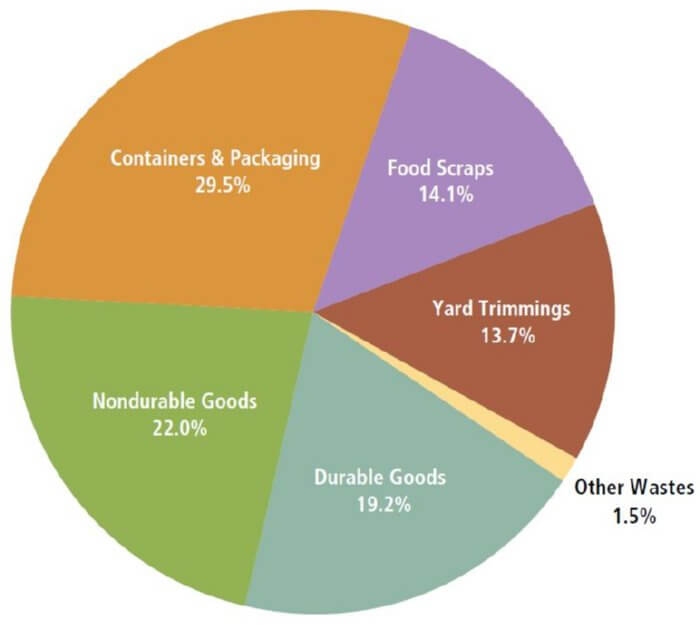
Total 2009 U.S. municipal solid waste generation, 243 million tons. www.epa.gov
Polyvinyl chloride, or PVC, (#3) is an integral component of packaging plastics and a major environmental offender, generating greenhouse gases and toxic byproducts in its manufacture. Chlorine’s chemical structure makes these byproducts especially predisposed to buildup in the environment and in the bodies of animals and people. DEHP, a softening plasticizer that is added to PVC and labeled a potential carcinogen by the EPA, is prone to leaching.
Related Post: The Story of Our Waste
This is worrisome, since PVC’s most common food-based applications are in cling wrap (used to package supermarket goods, or to preserve leftovers at home) and some food (squeeze bottles) and cooking oil containers. As such, it is probably not a good idea to purchase, store, and/or microwave food in cling wrap or containers marked with the “3” symbol on the bottom, indicating that it is made with PVC. Although 7 billion pounds of PVC is thrown away each year in the U.S., due to the nasty additives in PVC, only one-quarter of 1 percent is recycled.
Polystyrene, (#6) better known by its trade name Styrofoam, is a material most of us are familiar with. We typically recognize it in fast food containers, disposable utensils and plates, insulation, and packing materials, but did you know that it can also be found in computer housings, hairdryers, kitchen appliances, and toys? Like PVC, both the manufacture and usage of polystyrene products negatively impacts both our health and the environment:
- Polystyrene takes at least 500 years to decompose.
- The light, buoyant nature of polystyrene means it is easily washed or windblown into storm drains and waterways, where it contributes to marine pollution.
- Polystyrene contains both styrene and benzene, which can leach out when the material comes into contact with hot or oily foods. The risk of the former is uncertain (Source), but benzene is a known carcinogen. Think twice about the takeout Chinese and piping hot coffee, and definitely avoid microwaving containers made from polystyrene.
- The production of Polystyrene, like most manufacturing processes, requires the unsustainable use of fossil fuels.
- Polystyrene can clog the digestive tracts of animals.
- Polystyrene is rarely recycled, and is not “closed loop.” For example: if a Styrofoam cup is recycled, it won’t go into the production of another Styrofoam cup, but rather a different product (E.G., packing peanuts). This means more resources must be depleted in order to create more Styrofoam cups.
- According to a 1986 EPA report, polystyrene manufacture is the 5th largest generator of hazardous waste. 57 different chemicals are emitted during the combustion of polystyrene foam.
- Global production of polystyrene in 2010 was 15.4 million metric tons.
How To Help? Buy A Reusable Water Bottle
The best thing, of course, would be to stop using plastic water bottles completely. We recommend these eco-friendly, reusable water bottles.
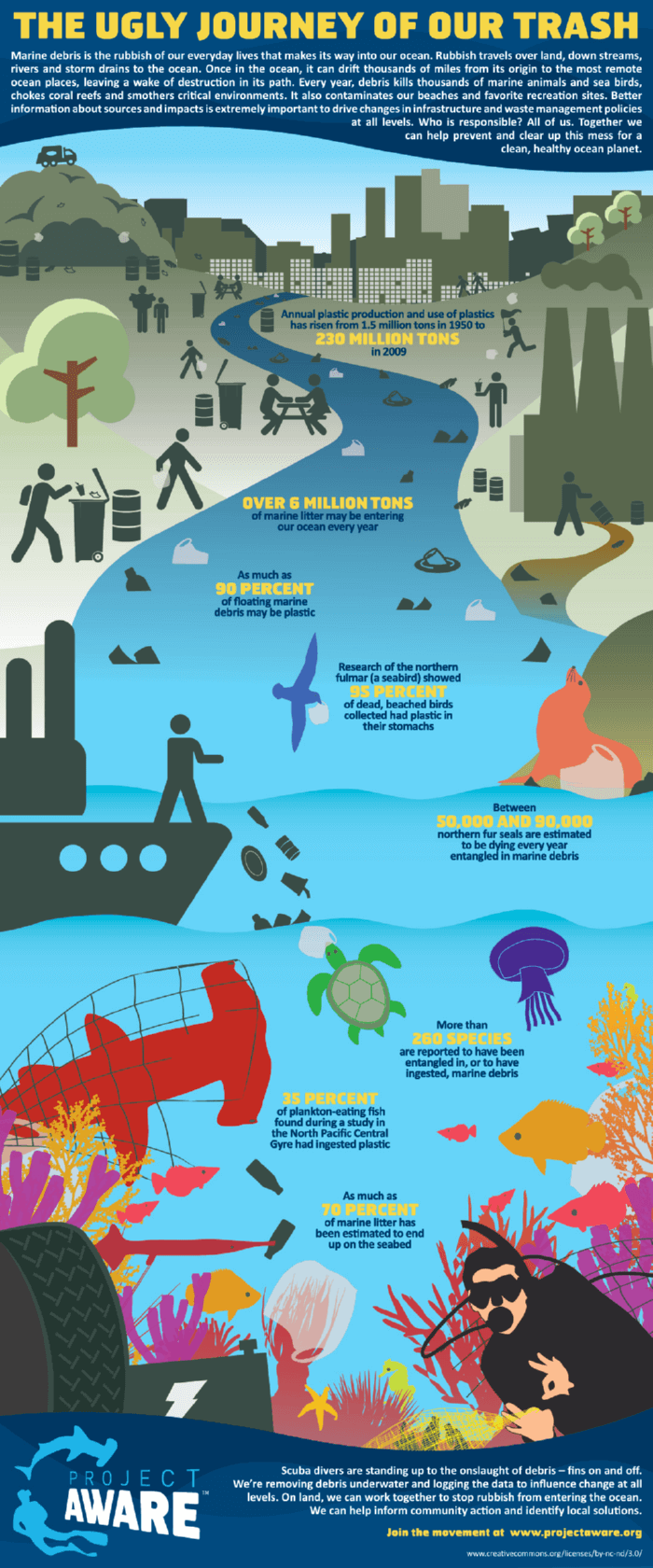
www.projectaware.org
The list of environmentally hazardous packaging and other disposables goes on. Did you know that more than 500 million disposable plastic straws are used in the U.S. per day? (Source) Or that China uses 45 billion pairs of disposable chopsticks per year, resulting in the annual decimation of 25 million trees? (Source) Bottled water produces 1.5 million tons of plastic waste per year. It is thousands of times more expensive than tap water, and in the U.S., far less regulated – despite the pristine imagery printed on the label, what you are drinking may be no cleaner than what you get from the faucet. The transformation of water into a pricy, wasteful, yet somehow desirable commodity may represent one of the biggest marketing scams in history. Instead of wasting money on the Dasani and Evian, protect the environment – and your wallet – by using a Thermos. The best options are stainless steel, lined aluminum, or glass. If you have concerns about the tap water quality in your community or don’t like the taste, installing a carbon filter is an easy and cost-effective remedy.
- At least 90 percent of the price of a bottle of water is for things other than the water itself, like bottling, packaging, shipping and marketing.
- 44 percent of ‘purified’ bottled water sold in the U.S. started out as municipal water.
- It takes about 1,100 to 2,000 times as much energy to produce and transport the average bottle of water to Los Angeles as to produce the same amount of tap water.
- About 1 million tons of plastic PET water bottles are produced in the U.S. each year, requiring the energy equivalent of 50 million barrels of oil. 76.5 percent of these bottles end up in landfills.
- Between 1997 and 2007, bottled water consumption in the U.S. more than doubled, from 13.4 gallons per person to 29.3 gallons per person.
- 26 to 41 percent of the 2.4 million tons of PET plastic discarded every year is bottled water bottles.
- Because plastic water bottles are shielded from sunlight in landfills, they will not decompose for thousands of years.
And if that isn’t enough to chew on, consider how much of your tax dollars went to unsustainably quenching Congress’ thirst…
How can packaging waste and disposable waste be minimized? When you wander into a supermarket, chances are that the majority of what you see will be packaged, and not entirely without reason. Until all foods are locally sourced, transported products must be ensured a reasonable shelf life, lest they rot before consumption and go to waste. This does not mean that there isn’t a dramatic overuse of disposable packaging, or that all kinds are created equal. When shopping, you can try to select items that use minimal or reusable packaging, and bring your own reusable bags to carry them home with. Choosing recyclable cardboard and glass over plastic and polystyrene is less likely to harm the environment and your health. When you shop try to buy in bulk, thereby reducing individual packaging. European consumers should keep in mind that products marked with the Green Dot are manufactured by companies that help fund recycling and waste recovery efforts.
Plant-based eco-packaging is a growing industry, and companies like Earthcycle and Mycobond make both ethically-sourced and sustainable products. Mounting environmental concerns are eliciting some gradual progress on a systemic level, and pushes for legislative action can force companies to use and develop better packaging alternatives. California has already moved to ban the use of polystyrene containers in foodservice, and distribution will halt by 2014. A 2007 Nielsen Company survey spanning 48 countries demonstrated that 40% of respondents were “very concerned” about levels of packaging waste, and a report from the Grocery Manufacturers Association found that food and beverage companies have managed to slash 1.5 billion pounds of packaging since 2005. Sights are set on a further reduction of 2.5 billion pounds by 2020. (Source) Walmart has pledged to reduce its packaging weight 5% by 2013, and ASDA, its UK counterpart, has cut 27% of its packaging weight since 2005. U.S. Walmarts have also made strides in transitioning away from PVC packaging for its sheets and tablecloths. A recent New York Times article highlights corporate efforts to cut costs and eliminate excess: www.nytimes.com.
These companies need our continued urging, and putting our money where our mouths are, makes a difference. Wherever possible, relinquish disposable goods in favor of those that are reusable and sustainable. Avoid packaging that can hurt you and the environment and is destined to sit in landfills. We have the power to communicate that waste reduction is a priority by carefully choosing what we buy.
Resources:
Waste prevention and recycling starts at home, and the CalRecycle website from CA.gov provides ideas and resources: www.calrecycle.ca.gov
Food and Water Watch.org, “Issues: Bottled Water.” www.foodandwaterwatch.org. You can sign their “Take Back the Tap” pledge not to drink bottled water here: action.foodandwaterwatch.org
Innovative, edible, and eco-friendly “Jelloware” cups – hopefully available for sale soon (under “Recent Projects): www.thewayweseetheworld.com
Read about the pros and cons of biodegradable plastics like PLA and PHA: TIME Magazine, 2010, “The Promise and Pitfalls of Bioplastic.” www.time.com
List of U.S. cities and counties that have banned, or are considering banning, polystyrene foodware: riseaboveplastics.blogspot.com
Not just wasteful, but annoying: 2010 NY Times article on Packaging Rage, or what happens when you spend 20 minutes trying to open the new pair of headphones you bought. It has spurred Amazon.com to decrease the amount of packaging it uses to ship to online buyers, reducing both stress and waste. www.nytimes.com
Polysteyrene Info:
Sources: www.businessbarbados.com, www.earthresource.org, www.sriconsulting.com


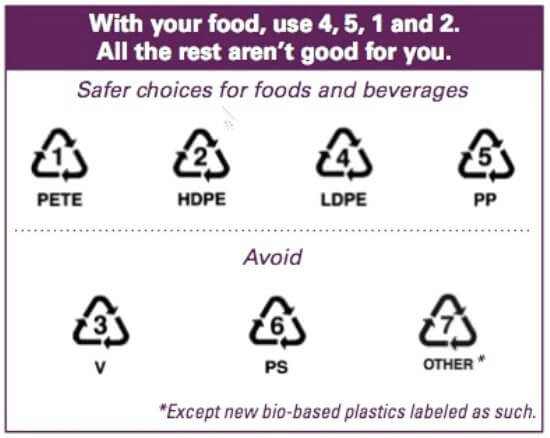
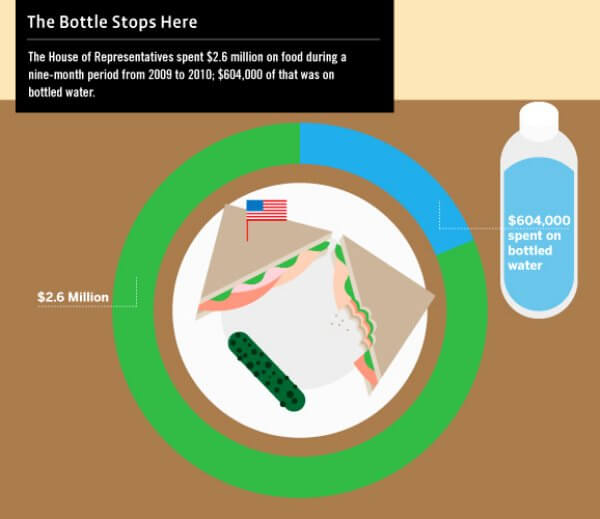






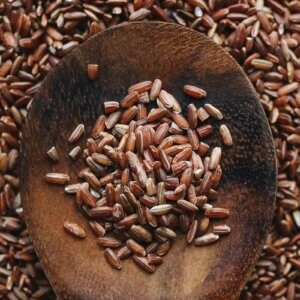

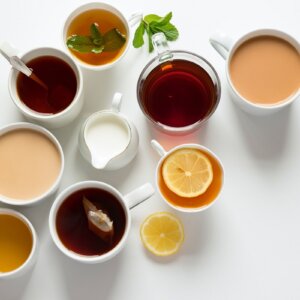


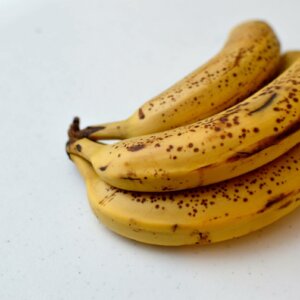

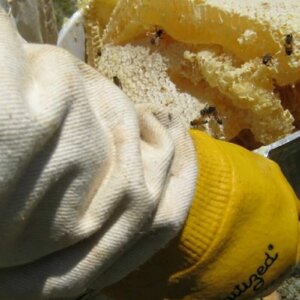

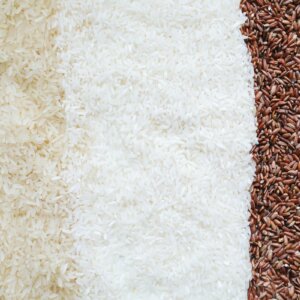


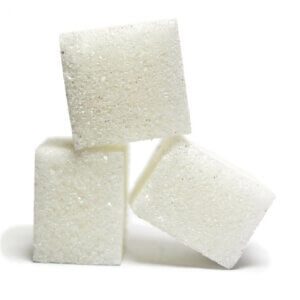
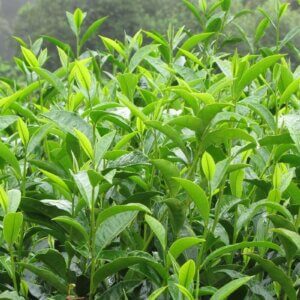








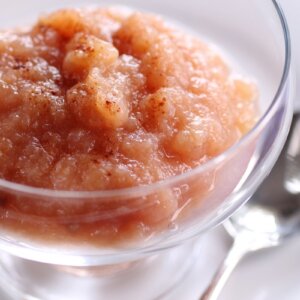









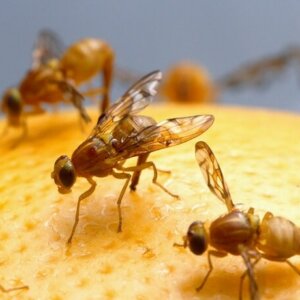

Each and every bit of plastic that has ever been created continues to be existing, with a lot of of it collects in our landfills and surroundings. Plastic water bottles square measure protected from daylight in landfills, they’re going to not decompose for thousands of years. Styrene will clog the organic process tracts of animals. Plastic Market Report
Dear Friends,
This is Winter form Longsheng Plastic Bags (Shenzhen) Co., Ltd., we are one of the leading manufacturer of environmental friendly BOPP bags, CPP bags, Aluminum foil bags, Zipper bags, side gusset bags, PP bags, PE bags, PVC pouches and paper cards & labels that widely used in food & gift & cosmetic & Medical & accessories area.
Should any of above item interested you, please do not hesitate to contact me immediately.
Thanks and Best Regards,
Winter
Website: http://www.szlongsheng.en.alibaba.com; http://www.longshengbag.cn
Tel: 86-755-28177428-28077366
Fax: 86-755-28177236
Mobile: 86 18682486055
Skype: duanchunmei.winter
E-mail: winter_longshengsz@126.com
Hi, I read here that ‘Waste prevention and recycling starts at home, and the CalRecycle website from CA.gov provides ideas and resources’ – NO. Waste prevention starts with those who create the waste. Large companies.
As consumers, we cannot buy products with less packaging… they are ALL over-packaged.
Thank you for your insightful, informative site. I have begun writing to the big food producers and fast food companies about their bakery, fruit and other packaging. I think people would recycle if companies such as Waste Management had accomodation for it. I will check in frequently for advice on what we can do about waste in the the oceans and landfills,pushing for recycling , compostable pacakages and reusing. Thank you.
Thanks for info 😉
POOOOOOOOOOOOOOOOOOOOOOOOOOOOOOOOOOOOOOOOOOOOOOOOOOOOOOOOOOOOOOOOOOOOOOOOOOOOOOOOOOOOOOOOOOOOOOOOOOOOOOOOOOOOOOOOOOP
At the office, every day I cook a bag of frozen vegetables. I take the plastic bag with the vegetables and empty it into another plastic bag ‘specially apt’ for the microwave. It is puzzling and gilt provoking to have to switch one plastic for another when, from the beginning, the vegetables could be packed in microwave safe plastic. (?) When I have access to a stove, I cook the old fashion way, on a cooking pot! 🙂
Could you please sent me the date of publication? I would like it for a research project. Thanks.
Uflex Ltd ensures the top of the line materials for the production of its plastic packaging. With innovations like custom design packaging we ensure our customers get the best out of our products. Apart from that, top of the line designs and recyclable plastics have been our bastion for last many years.
I think as a whole world we need to recycle more and think about what we are doing before we put things in the trash or dump.
hello,
i sew canvas for boats mainly,recently mn passed a bag ban in minneapolis,grand rapids,mn is trying to pass with help from earth circle
i started a sewing room making cotton grocery bags and am trying to get them to stores and the local community we will have a new website soon
i,ll keep you posted, 10 years ago nobody would look at these now they want them it,s about time,
A large amount of plastic waste has seriously polluted our environment, we should start to use less plastic bags, and actively looking for green ways to deal with these waste plastics.
I know you can give away unwanted plastic packaging on BoxGiver. Hope this helps!